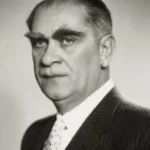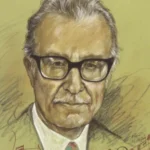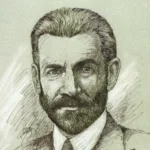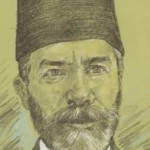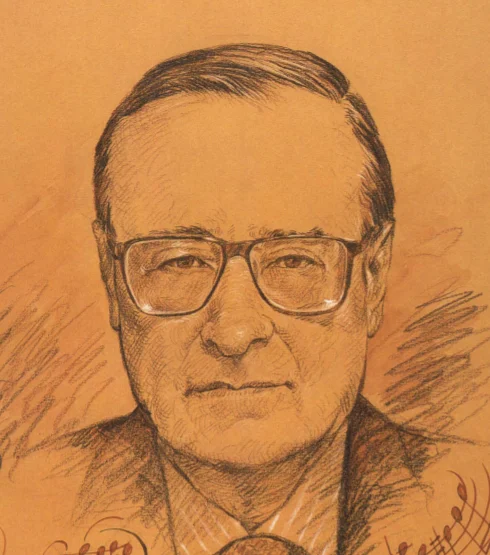
Abdullah Tahsin Yılmaz Öztuna was born on September 20, 1930, in Vezneciler, Istanbul. His father was Mehmet Muhiddin Öztuna, and his mother was Ayşe Süreyya Hanım.
Yılmaz Öztuna began primary school in 1936 and completed his secondary education at Yeni Kolej. For his higher education, he went to France and enrolled at the Institute of Political Sciences of the University of Paris.
Between 1953 and 1954, he returned to Turkey to fulfill his military service. After receiving his basic training at the Levazım School in Istanbul, he completed his service in Erzurum, Sarıkamış, and Selimiye.
In 1954, he continued his studies in the advanced programs of Civilisation Française at the Sorbonne and the Alliance Française. In 1957, he completed his higher education in France and returned to Turkey.
He accepted a position as a writer and scientific editor at Hayat magazine. Thus began his career as a professional writer.
On July 4, 1960, he married Hatice Doğu. Their daughter Hanzade was born in 1962, and their son Oğuzhan was born in 1964.
In 1965, he was appointed as the editor-in-chief of Hayat magazine. During this period, he published the Türkiye Ansiklopedisi (Encyclopedia of Turkey) together with Prof. Dr. Metin Tuncel. In 1966, he became a member of the TRT Repertoire Committee. The following year, in 1967, he completed his renowned twelve-volume work titled Türkiye Tarihi (History of Turkey). He also began writing political opinion columns for the newspapers Dünya and Son Havadis.
The task of writing the Encyclopedia of Turkish Music was offered to Yılmaz Öztuna by the Ministry of National Education. The encyclopedia was completed and published by the Ministry in 1969. In doing so, he fulfilled the will of the late master Hüseyin Sadettin Arel. The encyclopedia was later republished in two volumes by the Ministry of Culture.
In 1969, he met Süleyman Demirel, the Chairman of the Justice Party, and entered active politics. That same year, he was elected as a Member of Parliament for Konya on the Justice Party’s ticket.
In 1974, he became the Chief Advisor to the Ministry of Culture. During this period, he intensified his efforts toward the establishment of a Turkish music conservatory. His efforts proved successful, and the conservatory was opened in Istanbul, where he also served as a faculty member. He later succeeded in his efforts to establish the State Turkish Music Choir, which was founded under the direction of Nevzad Atlığ.
In 1975, he resigned from his position at Hayat Magazine due to a heavy workload. That same year, he taught Ottoman History and Civilization at the University of Widespread Higher Education. The lecture notes were later published as a book.
In 1979, he was appointed as Cultural Advisor to TRT and held this position until 1981. In 1983, he became one of the founding members of the Nationalist Democracy Party. In 1985, he served as a consultant for Faisal Finans, and in 1986, he worked as a columnist for Tercüman newspaper.
His musical journey spans over sixty years. It began at home by listening to shellac records, and continued by attending fasıl performances at Belvü, Taksim Municipality, and Tepebaşı Municipality Casinos, which were operated by his father. During this time, he became acquainted with prominent artists of the era. He began learning musical notation on his own using scores published by İskender Kutmani. He expanded his knowledge by following the Annotated Turkish Music program directed by Ruşen Ferid Kam on the radio. By the final year of primary school, he was able to read sheet music.
At the age of just twelve, he acquired Sadettin Nüzhet Ergun’s Türk Musikisi Antolojisi and took his first steps toward becoming a music researcher. Alongside Suphi Ezgi’s Nazari ve Ameli Türk Musikisi, he developed a keen interest in the theoretical aspects of Turkish music.
In 1943, he passed the entrance examination for the Istanbul Municipal Conservatory and enrolled there. He took solfeggio lessons from Kemal Gürses and theory lessons from Laika Karabey. In the sixth month of his enrollment, he began attending the classes of the great music master Hüseyin Sadettin Arel. Later, he became a private student of Suphi Ezgi, further increasing his knowledge and experience in the aesthetics and modal analysis (makam) of classical Turkish music, as well as in its performance practices.
During his years in Paris, he attended the Paris Conservatory as an auditor and had the opportunity to meet renowned virtuosos of Western music.
The composition dates, makams, and rhythms (usuls) of the instrumental works whose sheet music has been published are given below.
- Ferahfeza Peşrev/Devr-i Revan/İstanbul, 1 Şubat 1950
- Ferahnüma Peşrev/Muhammes/İstanbul 7 Mart 1949 (Bu eser büyük müzikolog Hüseyin Sadettin AREL’e ithaf edilmiştir.)
- Hisarbuselik Saz semai/Hasret/Aksak Semai/Semai/Aksak/Yürük Semai/İstanbul 20 Mart 1949
- Keman için Şedaraban Peşrev /Bir Aşk Hatırası/Nim Sofyan/İstanbul 1 Temmuz 1949
- Uşşak Saz Semai/Bir Yaz Hatırası/ Aksak Semai/Devrihindi/İstanbul 5 Mart 1949
- Ferahnüma Saz Semai/ Kapris/Aksak Semai/Yürük Semai/İstanbul 24 Nisan 1949

